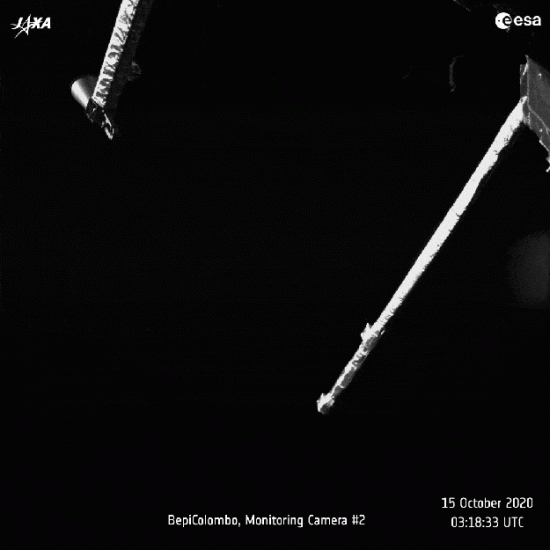October 19, 2020
Mercury ahead.
The BepiColombo satellites to Mercury were launched from French Guyana on October 20, 2018. The mission is named for Giuseppe Colombo (1920-1984) who was the first to realize that Mercury rotates three times for every two orbits around the Sun, because of resonance between the two bodies. The mission consists of two satellites: the Mercury Planetary Orbiter (MPO) and the Mercury Magnetospheric Orbiter (MMO). MPO is designed to study Mercury’s composition, while MMO will study Mercury’s magnetosphere.
The last visit to Mercury ended in 2015 when the MESSENGER spacecraft was deliberately crashed into the planet after running out of maneuvering fuel. MESSENGER found that Mercury possesses a magnetic field, but it remains mysterious. Planetary scientists think that a rotating “dynamo” of molten iron exists inside Mercury, although spectroscopic data shows no trace of iron. Why the molten interior did not cool-off eons ago is also a mystery—presupposing the iron core actually exists.
Another mystery is Mercury’s thin atmosphere. Temperatures exceed 400 Celsius at noon, and the planet is blasted with nine times more radiation than Earth, so how can it possess a detectable atmosphere? A planet that small, experiencing intense solar irradiation, should not have even the smallest atmospheric remnant. In the Electric Universe view, it is possible that Mercury is a young planet, so, like Titan (a possibly young moon of Saturn), it retains some of its primordial envelope, despite low gravity.
MESSENGER confirmed that Mercury is small. At 4878 kilometers in diameter, the moons Ganymede and Titan are both larger. Mercury revolves at a mean distance of 57,910,000 kilometers from the Sun, so a year on Mercury lasts 88 days. Since it rotates once every 58.6 days, the planet completes three rotations for every two orbits.
A previous Picture of the Day proposed that celestial bodies like Mercury should not be thought of as geriatric denizens of a wizened Solar System. Rather, given the anomalies, it would be more appropriate to think of it as youthful. Mercury is probably a young planet, as written, It is possible that it achieved its current orbit within the last 10,000 years. If that is true, there might have been a period in Mercury’s history when the surface was the scene of gigantic electric discharges pulling out craters, cutting vast chasms, and rearranging the atomic structure of the planet’s crust over large areas. Given those circumstances, no theories about Mercury will stand unless electricity is given its due.
BepiColombo received a gravity assist from Earth in April 2020. It will use the gravity from Venus to further slow it down in 2020 and 2021, and then use Mercury, itself, for braking maneuvers between 2021 and 2025. Once its velocity is sufficiently reduced, BepiColombo will be captured by Mercury’s gravity in December 2025.
Stephen Smith













